Towards a Robust, Resilient Wellbeing Economy for Scotland: Report of the Advisory Group on Economic Recovery
Report from the independent Advisory Group established by the Scottish Government to advise on Scotland’s economic recovery in the wake of the COVID-19 pandemic.
6. Charts and figures
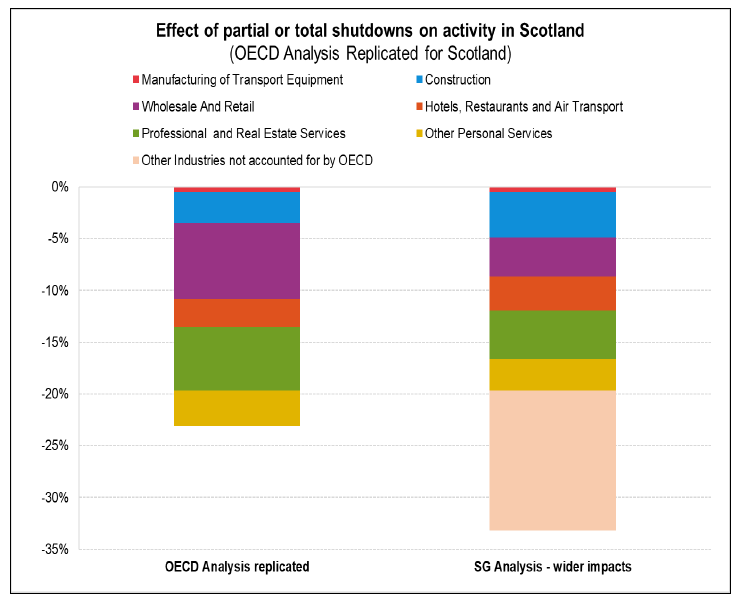
Figure 1 description
This figure shows the composition of the impact of C19 lockdown on economic activity across different sectors of the economy in Scotland. The total impact shows that replicating the industries examined by the OECD for the UK and other countries 22% of the economy in Scotland is closed. Extending this to all industries including those not examined by OCED, increases the impact to a 33% fall in activity.
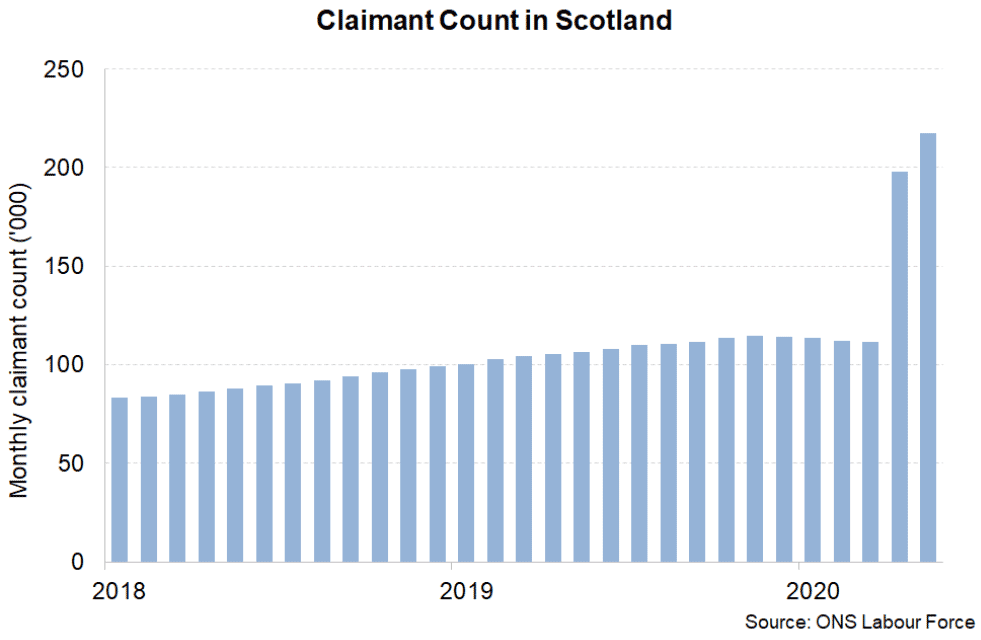
Figure 2 description
This figure shows the monthly claimant count in thousands. The count has increased from around 800,000 at the beginning of 2018 to around 110,000 by the start of the crisis. IT has then risen dramatically to 220,000 over the course of April and May 2020.
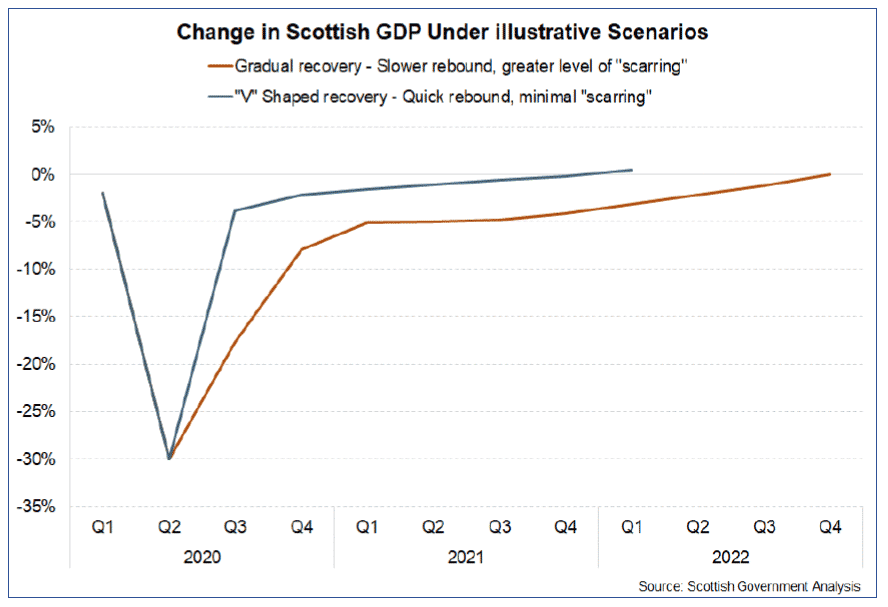
Figure 3 description
This figure shows two scenarios modelled by the Scottish Government for the future path of GDP in the medium term. The first, a v-shaped recovery sees GDP reach pre-crisis levels in early 2021. The second a gradual recovery, sees GDP reach pre-crisis levels in late 2022.
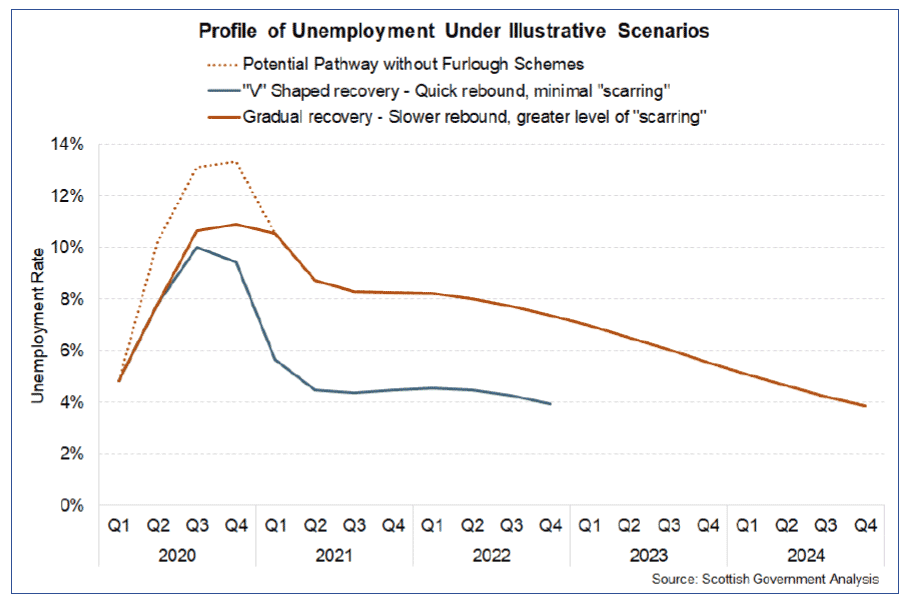
Figure 4 description
This figure shows three paths for unemployment. Under a v-shaped recovery it peaks at 10% in Q3 2020 before returning to pre-crisis levels in Q2 2021. Under the gradual recovery scenario it reaches a peak of 11% in late 2020 and does not reach pre-crisis levels until Q4 2024. A third path shows that without the furlough schemes, unemployment would peak at 13% and then follow the gradual recovery path.
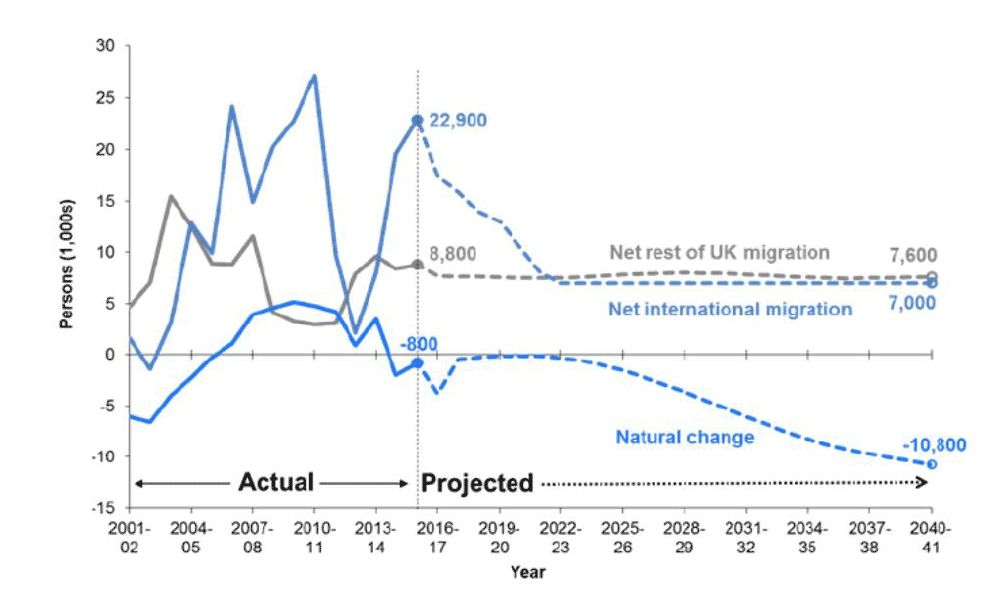
Figure 5 description
This figure shows the historical changes in Scotlands population since 2001 and future estimates of annual levels if net migration from the rest of the UK, net migration from other sources and the underlying natural change. But 2040, the natural change is an annual loss of -10,800. This is projected to be mitigated by net migration of 7,600 people from the rest of the UK and 7,000 people from elsewhere, primarily the EU. The diagram illustrates the point that in the absence of international migration, the Scottish population is expected to fall.

Figure 6 description
This figure shows the national performance framework "petal" or "cog" which illustrates the 11 National outcomes arranged around a central circle containing the governments purpose and values. Full details are available at nationalperformance.gov.scot
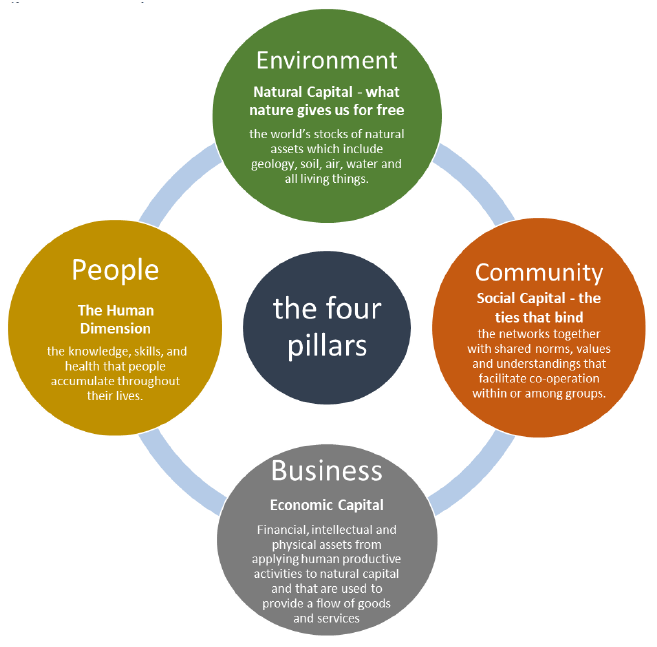
Figure 7 description
This figure simply summarises the material within the main report in a graphic containing a box for each pillar looking at the situation before and after the crisis. There is also a key diagram for each that is covered in detail in the analytical annex to the report.
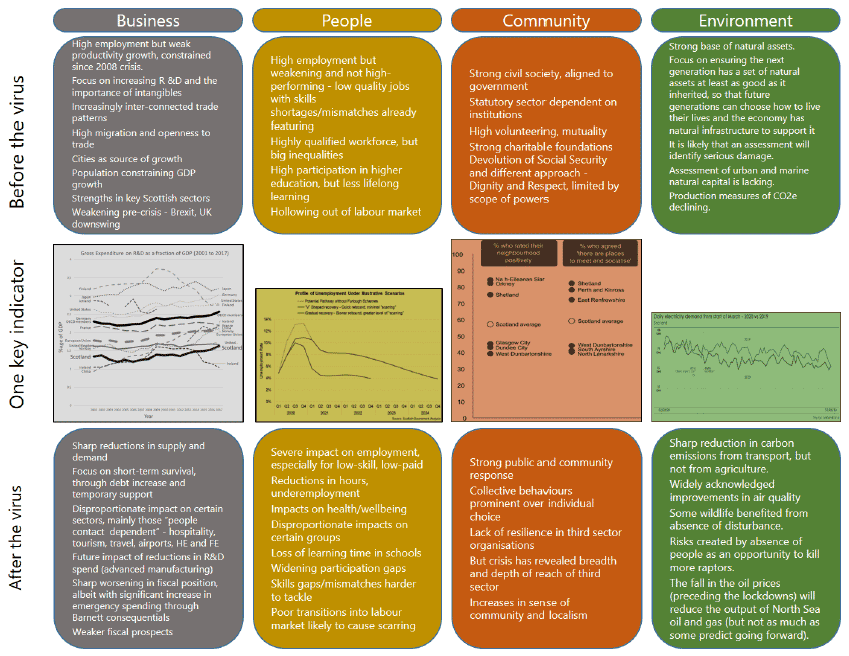
Figure 8 description
This figure simply summarises the material within the main report in a graphic containing a box for each pillar looking at the situation before and after the crisis. There is also a key diagram for each that is covered in detail in the analytical annex to the report.
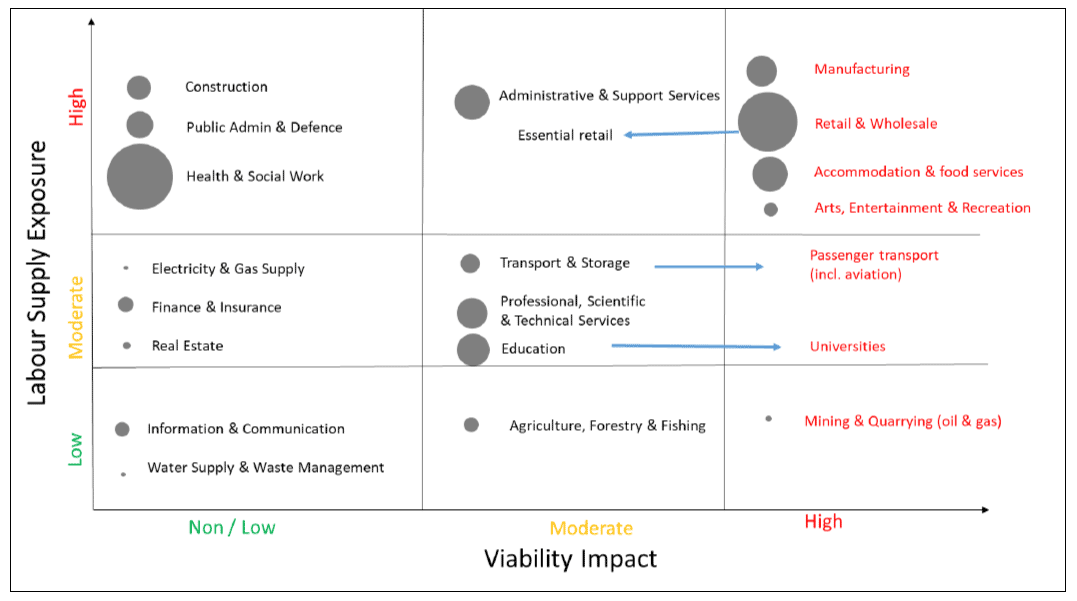
Figure 9 description
This figure shows how different sectors of the economy may be affected by labour market issues and overall viability post C19. For example Construction is highly impacted by labour market issues but has a low impact in the longer term overall. In other words it should recover relatively quickly. Arts, Entertainment and Recreation also has a high labour supply impact and is expected to have a high longer term impact from the crisis.
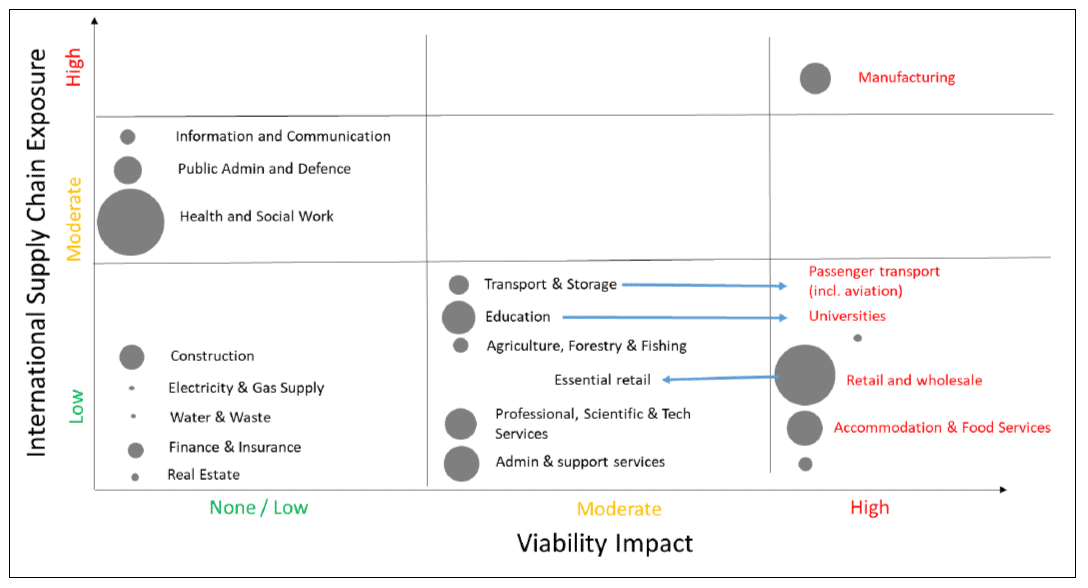
Figure 10 description
This is similar to figure 10 but shows the issue of international supply chain exposure against the overall viability impact. Manufacturing is likely to be highly impacted overall on both measures whilst sectors such as accommodation & food services are less likely to be affected by supply chain issues.
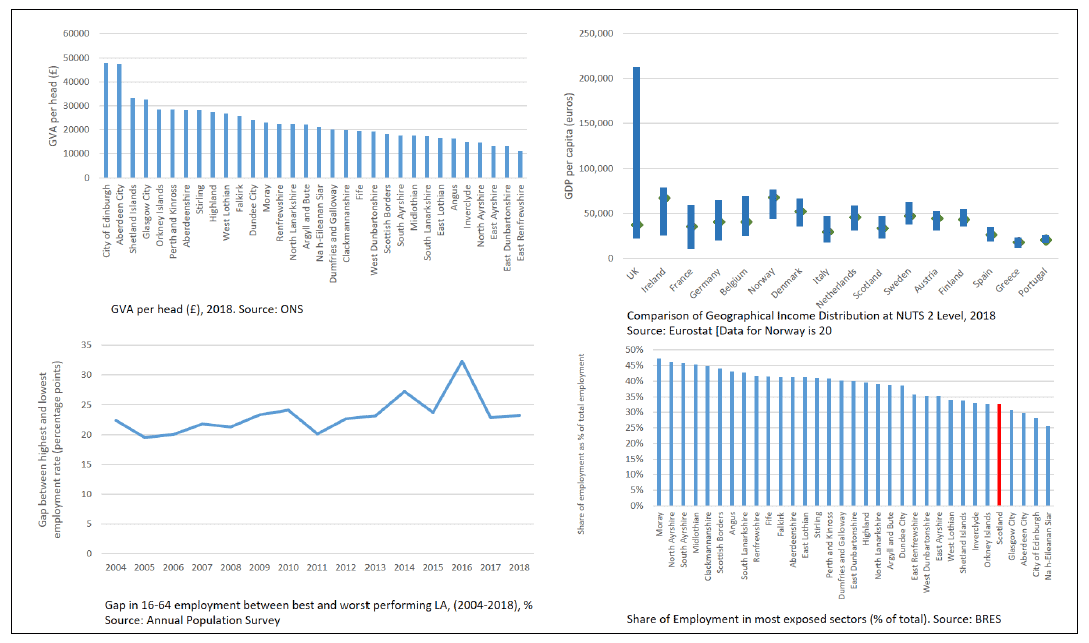
Figure 11 description
This figure shows three different indicators GVA per head, the gap n 16-64 employment, the share of employment in most exposed sectors for each of Scotland's 32 Local Authorities. It also shows how the distribution of GDP per head is much more variable across the regions of the UK by a considerable margin compared with a range of comparator European countries including France, Sweden and Spain.
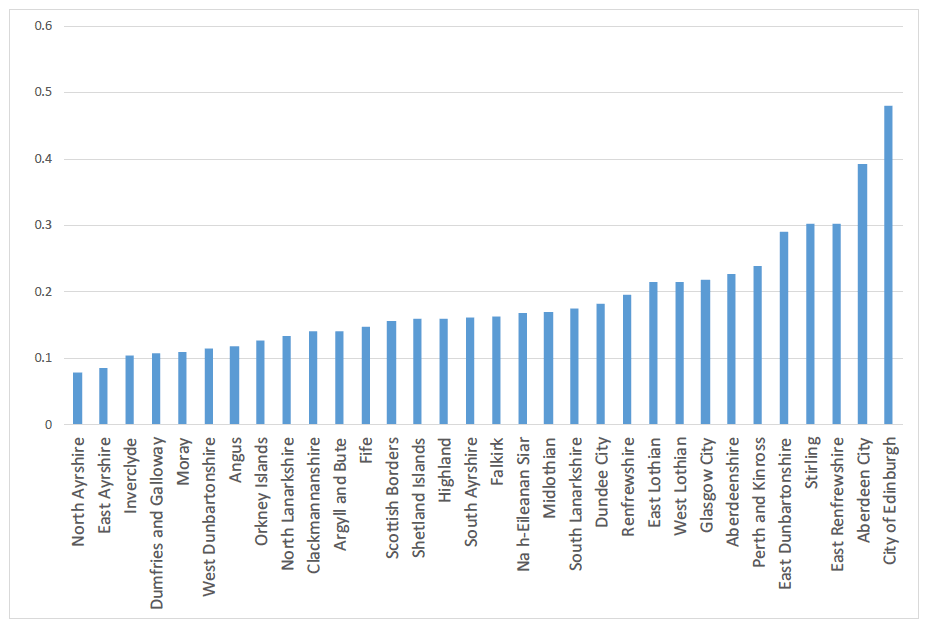
Figure 12 description
This figure shows an index of regional resilience which indicates how Scotlands local authorities are likely to suffer differential impacts from the crisis. North Ayrshire is least resilient whilst Edinburgh is most.
Contact
Email: AGER@gov.scot
There is a problem
Thanks for your feedback